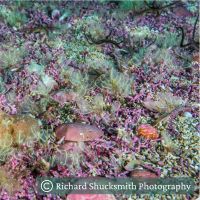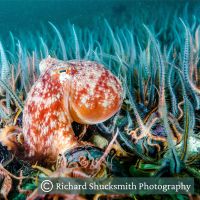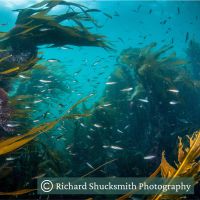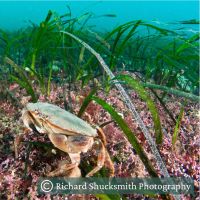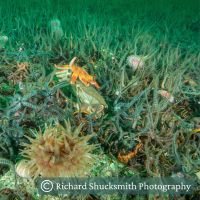Blue Carbon Yell
Welcome to the Blue Carbon Yell Photo Exhibition
The Marine Spatial Planning Team at UHI Shetland were commissioned by the Carbon Neutral Islands team to develop public photo exhibition, workshop and kelp identification guide. The exhibition and workshop focus on the Blue Carbon habitats around Yell and the wider Shetland coasts with the aim of providing the community with the skills and knowledge to record and map Blue Carbon habitats around Yell.
Each of the 10 images is accompanied by narration which guides you through the habitats and their ability to store and sequester carbon. The narration also highlights other valuable features of these habitats, such as
- providing homes for a diverse range of marine life including
- acting as a nursery area for commercially valuable shellfish and finfish
- stabilising sediments
- reducing wave action and protection against coastal erosion
Click on the images to see all the photographs and find out more about each habitat.
Role of UHI Shetland
The Marine Spatial Planning team, led by Dr. Rachel Shucksmith, delivered the project. The in-person exhibition and accompanying website were developed by Tanya Riley and Kathryn Allan. The workshop was designed and delivered by Dr. Rebecca Giesler. Kelp ID guide designed by Kathryn Allan. Audio narration by Louise Thomason (UHI Shetland Fisheries Team).
External Contributors
Many thanks to local wildlife photographer and filmmaker Richard Shucksmith for providing the images for the exhibition.
Project Background
Project Background
Community Energy Scotland
This exhibition and workshop was funded by the Carbon Neutral Islands project. The project is supporting six Scottish island communities towards achieving net zero by 2040, demonstrating the climate-resilience and low carbon potential of islands. In Shetland CNI are working with the Yell community to support them in achieving their net zero aspirations.
The project is led by the island communities who have worked together to identify ideas and priorities for their islands and turn these into real tangible actions that will help decarbonise local economies, increase resilience to climate change, and provide wider social and economic benefits.
Carbon Neutral Islands project is a Scottish Government Programme being led by Community Energy Scotland.

What's Happening In Yell?
In May 2023, the Yell community published their Yell Community Climate Action Plan detailing existing knowledge and data and prioritises key actions towards achieving a carbon neutral and sustainable future.
North Yell Development Council (NYDC), the local community anchor organisation for the Carbon Neutral Islands Project on Yell, employs Barry Nisbet as Community Development Officer who has led on the development of this plan.
Within the plan, the community have referenced the importance blue carbon habitats can play in capturing and storing carbon. However, current data gaps on the extent and condition of these habitats around Yell make it difficult for them to accurately understand the potential of blue carbon habitats for climate change mitigation on Yell.
Working with UHI Shetland
The Marine Spatial Planning Team at UHI Shetland were commissioned by the Carbon Neutral Islands team to develop a public photo exhibition, workshop and kelp identification guide. This would help to raise awareness within the community on the Blue carbon habitats that exist around Yell and upskill the volunteers to enable them to record and map these habitats.
What are Blue Carbon Habitats?
What are Blue Carbon Habitats?
The Scottish Blue Carbon Forum defines blue carbon as the carbon captured and stored in marine and coastal ecosystems that accumulates over long timescales through natural processes (e.g. photosynthesis).
Blue carbon habitats are increasingly recognised as a nature-based solution in tackling climate change and, in conjunction with some terrestrial habitats, can help to reduce atmospheric carbon dioxide via natural sequestration and carbon capture.
In addition, these habitats also play many other vital roles within marine ecosystems:
- Providing habitats for a diverse range of marine species including spawning and nursery areas for commercially valuable fish and shellfish.
- Where these habitats create dense beds, they can help stabilise sediments.
- Habitats such as kelp absorb wave energy and so lesson the risk of coastal erosion and flooding.
Shetland’s blue carbon habitats include:
- Seagrass beds
- Horse mussel beds
- Maerl beds
- Brittle star beds
- Kelp forests
- Saltmarsh
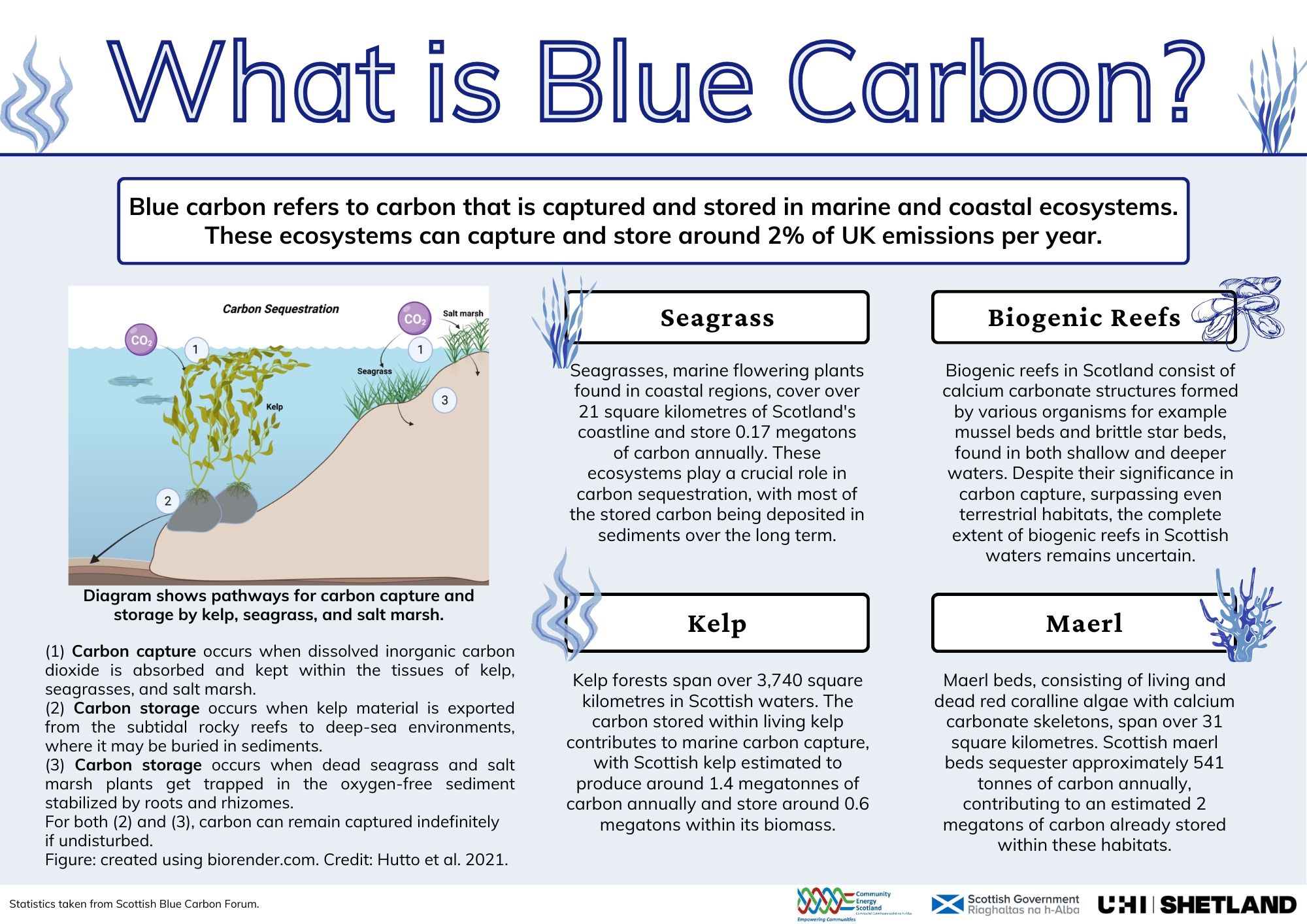 Download What is Blue Carbon? as a pdf
Download What is Blue Carbon? as a pdf
 Download Blue Carbon Habitats Yell as a pdf
Download Blue Carbon Habitats Yell as a pdf
In-person Exhibitions and Workshops
In-person Exhibitions and Workshops
Thank you so much to everyone who came out to visit our exhibitions in Burravoe and Cullivoe. It was lovely to chat to so many enthusiastic and interested people.
Attendees were able to learn about the blue carbon habitats around their island and how important it is that we better understand them.
Those who attended the workshop led by Dr. Rebecca Giesler were able to explore how they can be directly involved in finding out where these habitats are and learnt survey planning and data collection techniques enabling them to accurately map them.
If you missed the workshop but would like to get involved, please contact the North Yell Development Council. Email: office@northyell.co.uk
We would especially like to hear from interested wild swimmers and snorkellers, drone pilots or paddleboarders/kayakers.
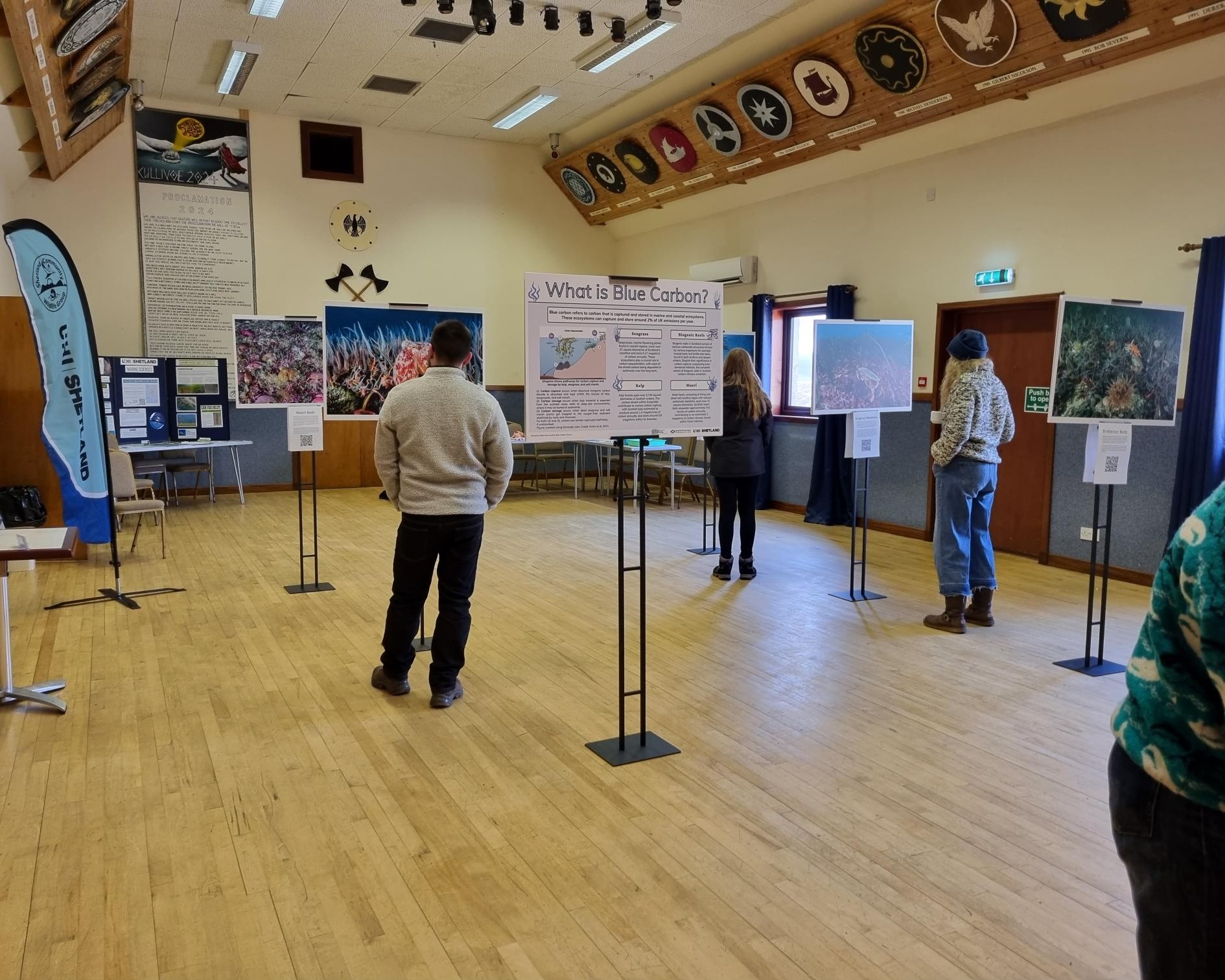
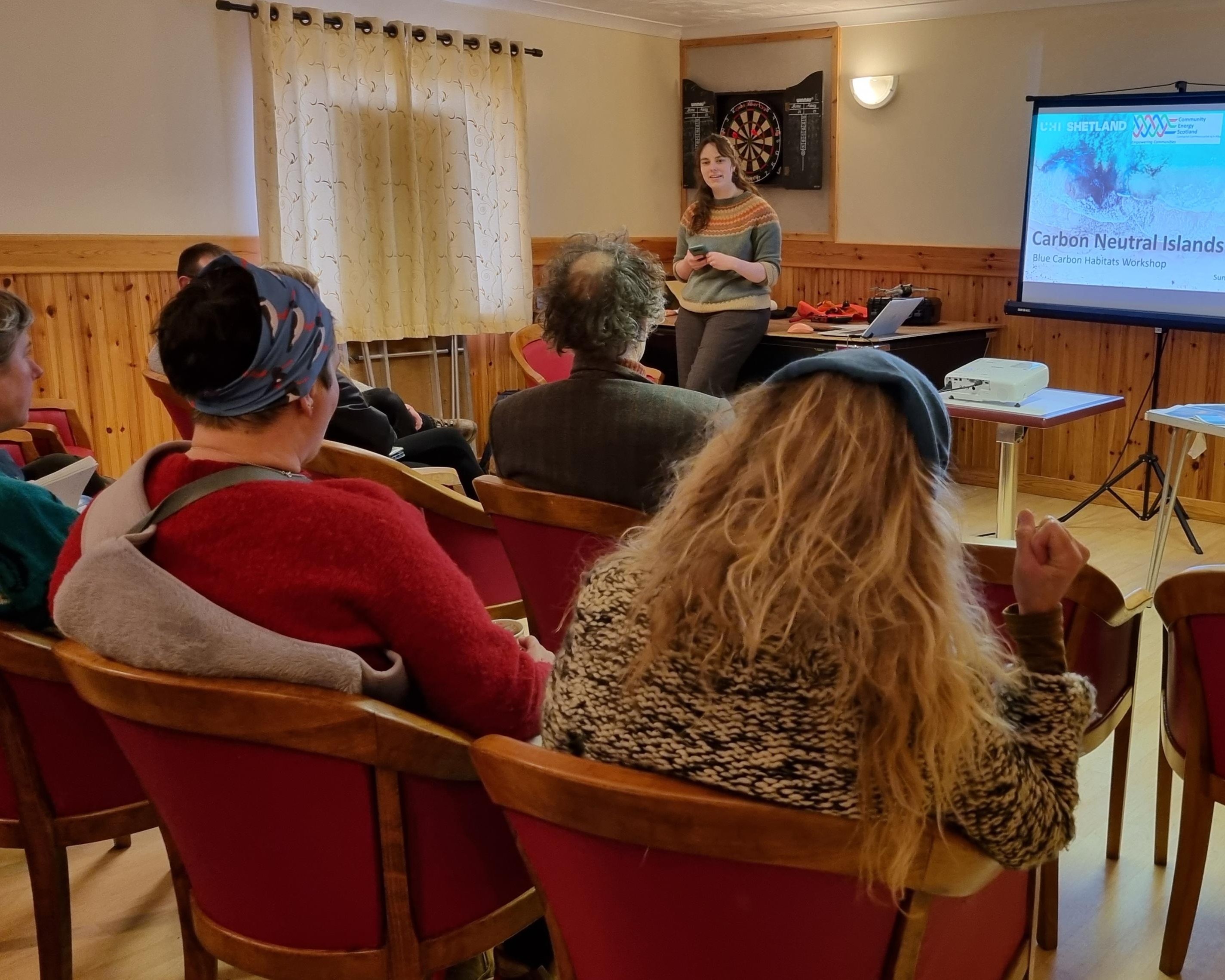
Download the Kelp ID Guide
Download the Kelp ID Guide
As part of the project an identification guide for wild swimmers and snorkellers was developed. The guide provides information on the main kelp species that form dense forests, how to identify them and the role they play as a blue carbon habitat.
- Download the Kelp ID guide.
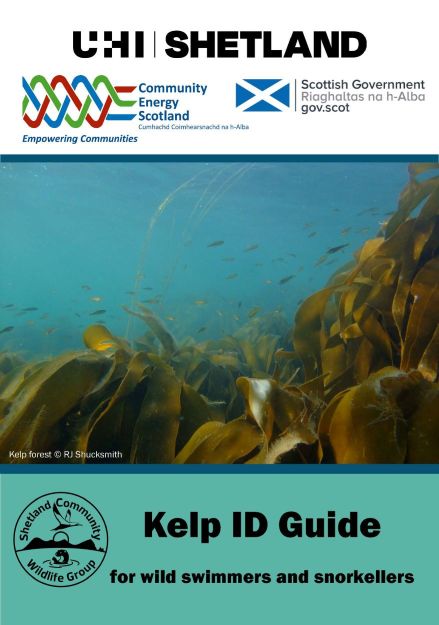
Get Involved
Get Involved
Carbon Neutral Islands Yell are seeking volunteers to help them gain a better understanding of the blue carbon habitats in Yell. If you are interested in the project and would like to find out more information, the North Yell Development Council on: office@northyell.co.uk
They would especially like to hear from people with the following skills-
- Drone pilots with their own kit to help take aerial photographs of kelp forests
- Experienced wild swimmers and snorkellers to help map the size of habitats such as kelp forests and seagrass beds
- Keen coastal walkers to report kelp forests spotted from the shore in Yell
